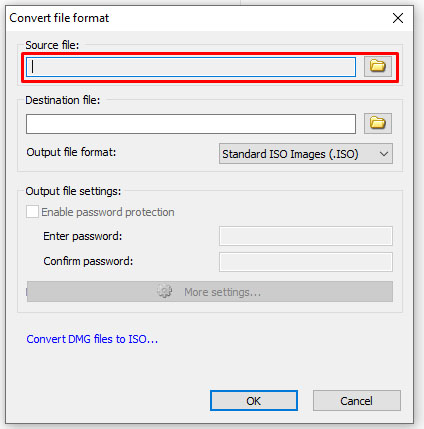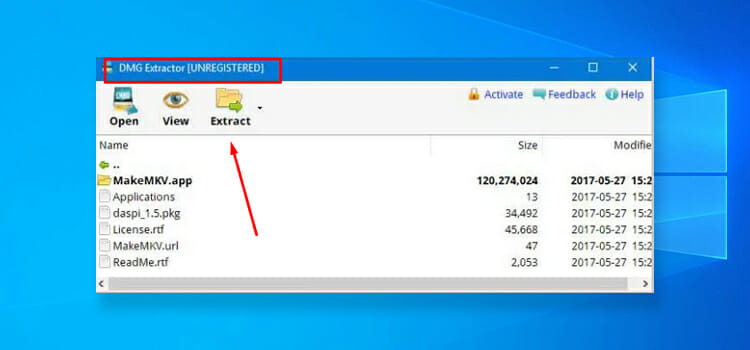
#Open dmg how to#
Hooking this application via Squish is not currently possible, so Squish can not be used to automate the installation of apps that are packaged in this way.Source:- How To Open Or Run. pkg files are not executable, and they are handled by a system application called Installer.app. If the AUT just consists of an app bundle (Application.app) as outlined in the beginning, we could simply copy it to a temporary location, register it with Squish (like we did with the installer above) and run it right away.
#Open dmg code#
A working implementation as well as all the source code from this post can be found in the Knowledge Base article that covers this topic as well. That one just calls umount /Volumes/Your_Image to eject the image after the installer has terminated. Place a breakpoint there and start recording!Ĭoncerning cleaning up after ourselves, you might remember the closeDmg() function in the pseudo code far above. At the snooze(1) in the last line, the installer is up and running. You can now teach Squish to complete your installer by recording the necessary steps. # recording a snippet (Run > Record Snippet): # Set breakpoint on the next line, execute to it, start StartApplication('"%s"' % installer_file_name) Test.startSection("Start installer as AUT") # Start running the installer as the AUT from here

If we put everything together it could look like this: def main(): Let’s get them to do something helpful! Putting Everything Together We have completed the two helper functions from the pseudo code we started out with. The command line this time: $SQUISH_PREFIX/bin/squishserver -config addAUT your_installer_name /Volumes/Disk_Image/. Test.fatal("Registering installer as AUT failed:") Test.startSection("Register installer as AUT") For that to work the installer has to be registered with Squish as a separate application under test (AUT) – which boils down to another command line call: def registerInstallerAsAUT(): The next step is to execute the installer so that we can record and replay actions on it as usual. The disk image is mounted and macOS should have opened a window as if we had clicked it manually. Registering the Installer as a Squish AUT (The open command performs the same action as clicking an item in a Finder window would.) You’ll notice we use this code pattern several times to execute the commands we need. This snippet essentially just executes the command open ~/path/to/Application.dmg and makes use of macOS’s automatic dmg mounting mechanism. Test.fatal("File: %s" % os.path.join(dmg_file_path, dmg_file_name)) Let’s start with openDmg() so that we can see what’s inside the image… def openDmg(): The others are helpers we are going to implement in the next paragraphs to access the dmg installer image. You might recognize the next-to-last one, it is the built-in Squish function to start an application under test. StartApplication("application_installer")Īs you can see, there are three functions. RegisterInstallerAsAUT("application_installer") The easiest way to get to grips with the contents of a disk image (from Squish) is to open it via the command line. But before we get our hands dirty let’s start by looking at the general idea in pseudo code: openDmg("my_application_installer.dmg") They usually contain either the app bundle itself or an installer package (.pkg) that performs additional setup besides extracting an app bundle to /Applications. Since we are on macOS, applications are packaged inside disk image (.dmg) files. Just in case you are (also) on Windows, we outlined a procedure for MSI installers in an earlier blog post. That procedure is part of the first impression you make, so it would be nice to get it right, wouldn’t it? Let’s take a look!

#Open dmg install#
However for a new user, there are a few steps to take until they even run the application in the first place: they need to install it. If you have used Squish before, you probably already test your application thoroughly.


 0 kommentar(er)
0 kommentar(er)
